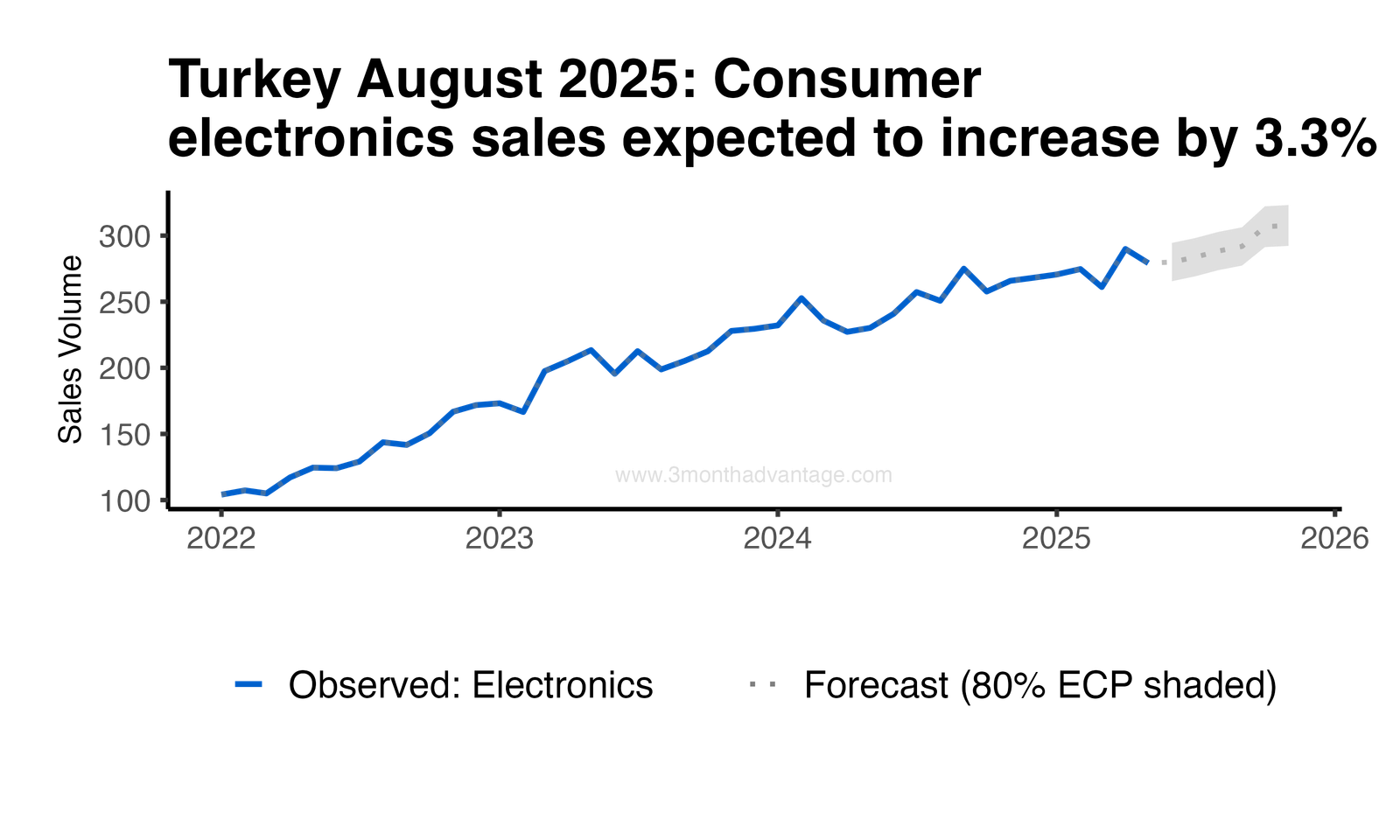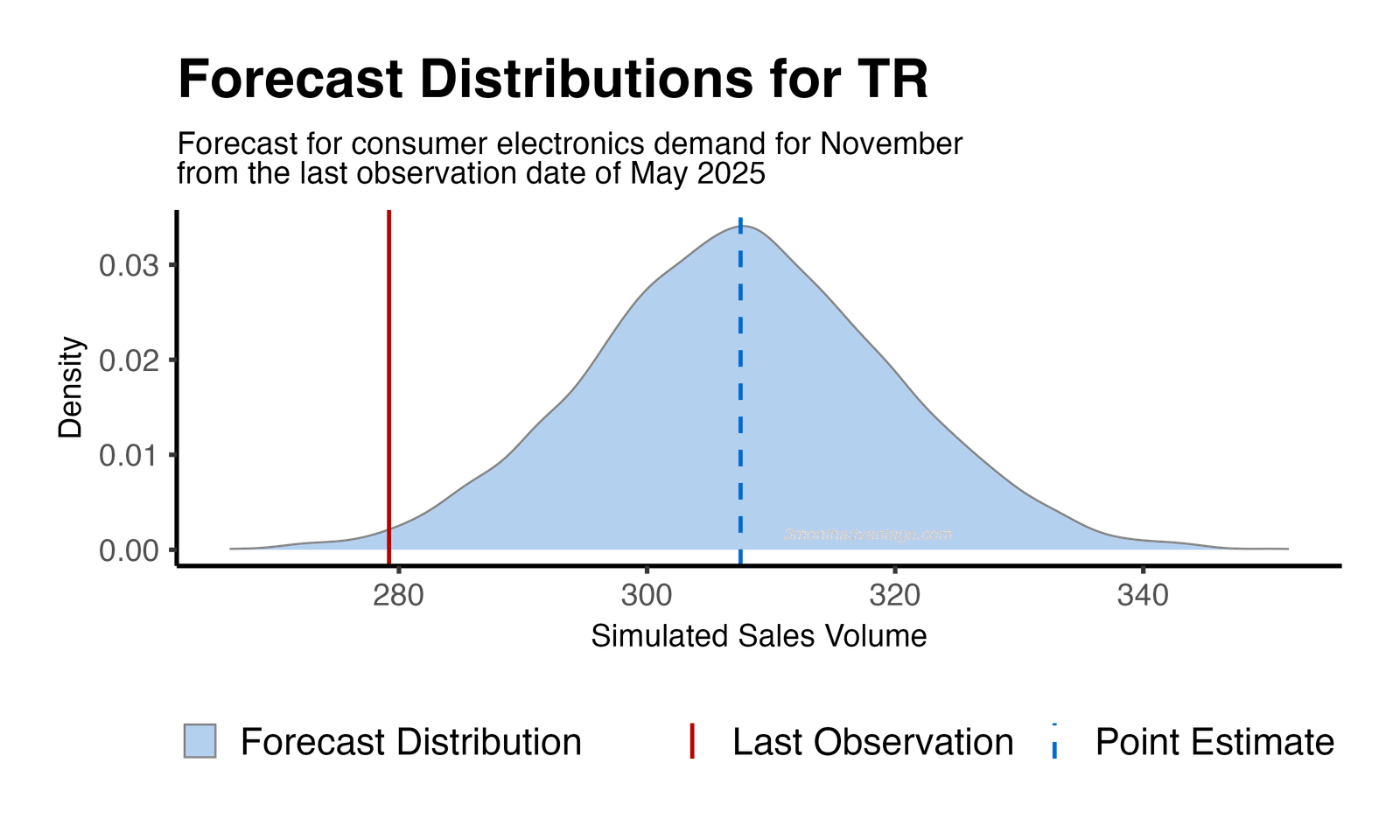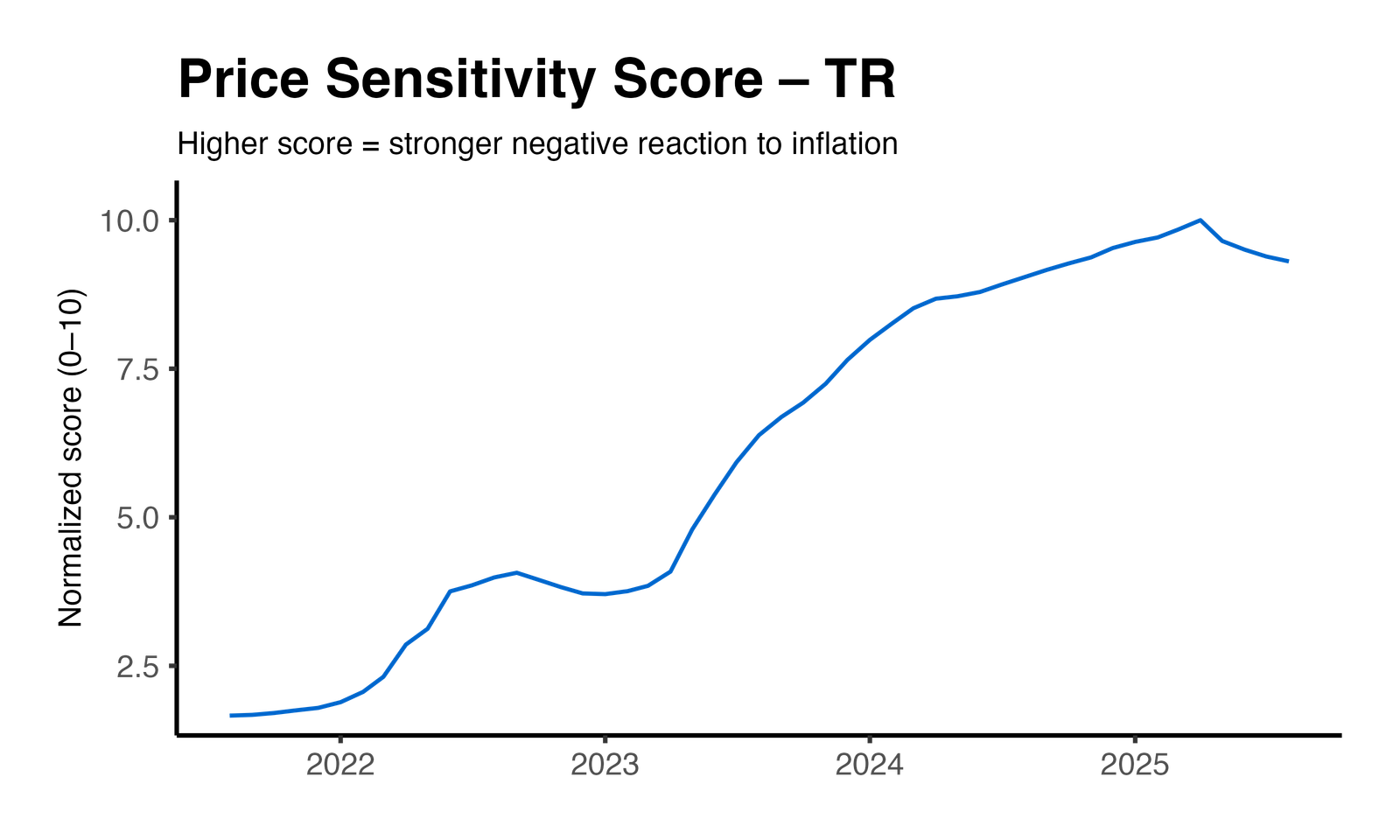
Consumer electronics sales in Turkey are projected to grow by 3.3% in August, with a month-on-month increase of 1.7%. By November, sales are anticipated to rise by an additional 10.2%. The three-month forecast volatility in this sector is 4.2, which represents a decrease of 4.06 from the previous year. These projections are derived from the Eurostat consumer electronics retail index data, indicating a stable yet positive trend in the market.

The forecast for the consumer electronics sector indicates a 95% probability of increased demand by November 2025. The distribution curve highlights the most likely demand values at its peak, with the tails representing less probable outcomes. For business planning and risk management, this suggests a strong need to prepare for increased production and inventory, while also considering strategies to mitigate risks associated with less likely demand fluctuations.

Turkey shows a high sensitivity to price changes compared to its European counterparts. The year-over-year normalized price-sensitivity score decreased by 3%, while the volatility of this score decreased by 70%, indicating a slight reduction in both metrics. These figures reflect the year-over-year drift and stability of consumer-electronics price elasticity, derived from rolling twelve-month windows. All estimates are based on a hierarchical mixed-effects model that integrates data across different regions, resulting in an overall price-effect *p*-value of 0.016. This suggests that pricing strategies in Turkey should be carefully managed to maintain demand stability.

Method: Price Elasticity Insights